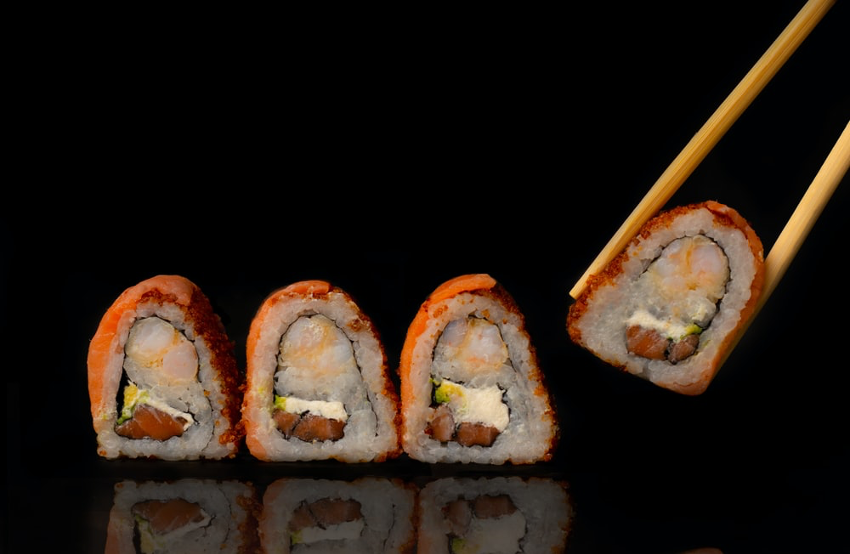Chopsticks are indispensable to the Japanese dining table. Their lives are said to "begin and end with chopsticks", and they have treated them with great care. For the Japanese, chopsticks are more than just tools; they symbolize the spirit of harmony. Let us take a closer look at the Japanese chopstick culture.
Origin and History of Chopsticks
It is thought that chopsticks first came into use in Japan during the Yayoi and the Asuka period (B.C. 3th to A.C. 7th century).
Originally, chopsticks were not used for eating, but for rituals. Ancient Japanese people ate meals directly with their hands, and chopsticks were used to prevent people's hands from touching the food for the gods.
Chopsticks came to be used for meals in the early 7th century. Prince Shotoku Taishi, who held political power as regent of the emperor, sent an envoy to the Sui Dynasty in China, a country with a sophisticated culture, to learn from them.
When Ono-no-Imoko went on a mission to Sui Dynasty China, the envoy was entertained with a meal where chopsticks were used. When Ono-no-Imoko brought chopsticks and a spoon back to Japan and introduced the Chinese way of eating, Prince Shotoku Taishi was greatly impressed by the graceful "chopstick manners" of the Sui Dynasty.
Prince Shotoku Taishi first spread the culture of using chopsticks to the Imperial Court. Eventually, the chopstick manner spread to the common people, and it is said to have evolved in its own unique way in Japan.

Japanese Chopstick Culture
There are other countries besides Japan that use chopsticks, including China, Korea, Taiwan, Thailand, and Vietnam, but most of them use chopsticks in combination with a spoon or a knife. The pure use of chopsticks alone is a unique Japanese way of eating.
In Japan, a pair of chopsticks is counted as "1 zen (膳 or set)". A section of this character describes a body part, such as the chest or arms. In other words Japanese regard chopsticks as a part of the body. While Japanese chopsticks are thin, there are 12 ways for the usage: pinching, clasping, pressing, scooping, tearing, placing, peeling, unraveling, wrapping, cutting, carrying, and mixing.
"Hashi" is a Japanese word for chopsticks, meaning something that serves to connect two worlds. For example, just as a bridge (hashi for 橋) connects one edge and another edge or a ladder (hashigo for 梯子) connects a high place to the ground, Hashi chopsticks were also thought of as something that connects people to the gods.
In most Japanese households, each person has his or her own pair of chopsticks. This is also a custom not seen in other chopstick-eating countries. This is because, since ancient times, it has been believed in Japan that a person's spirit resides in the chopsticks. Although few people think so nowadays, there are many cases where chopsticks are not shared, even between lovers or family members.
Disposable chopsticks are used in restaurants and take-out bento boxes, but recently "my chopsticks", in which people carry their own personal chopsticks, has been attracting attention from the standpoint of sustainability. Why not aim for an ethical lifestyle by carrying your favorite my chopsticks?
Proper Use and Manners of Chopsticks
The place to hold chopsticks is about two-thirds of the way up from the chopstick tips. The upper chopsticks are held between the index and middle fingers, with the thumb attached. The lower chopsticks are held in place by the tip of the ring finger and the base of the thumb. When picking up an object, use the middle and index fingers and do not move the lower chopsticks. By moving only the upper chopsticks and opening or squeezing the chopstick tips, you will be able to pick up any size object at will.

There are some things that are not allowed to be done with chopsticks. Of more than 70 mistakes, here are some of the most common.
Stabbing chopsticks
Sticking chopsticks into food
Chopstick transfer
Passing food from one chopstick to another
Use chopsticks as tools
Using chopsticks to bring the plate close to you
Chopstick etiquette is not a rigid one, but rather a way to avoid causing discomfort to those who share a meal with you. It is not necessary to master them perfectly, but it is a good idea to have them in a corner of your mind as knowledge.

